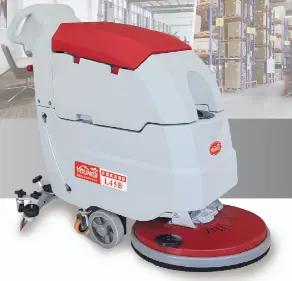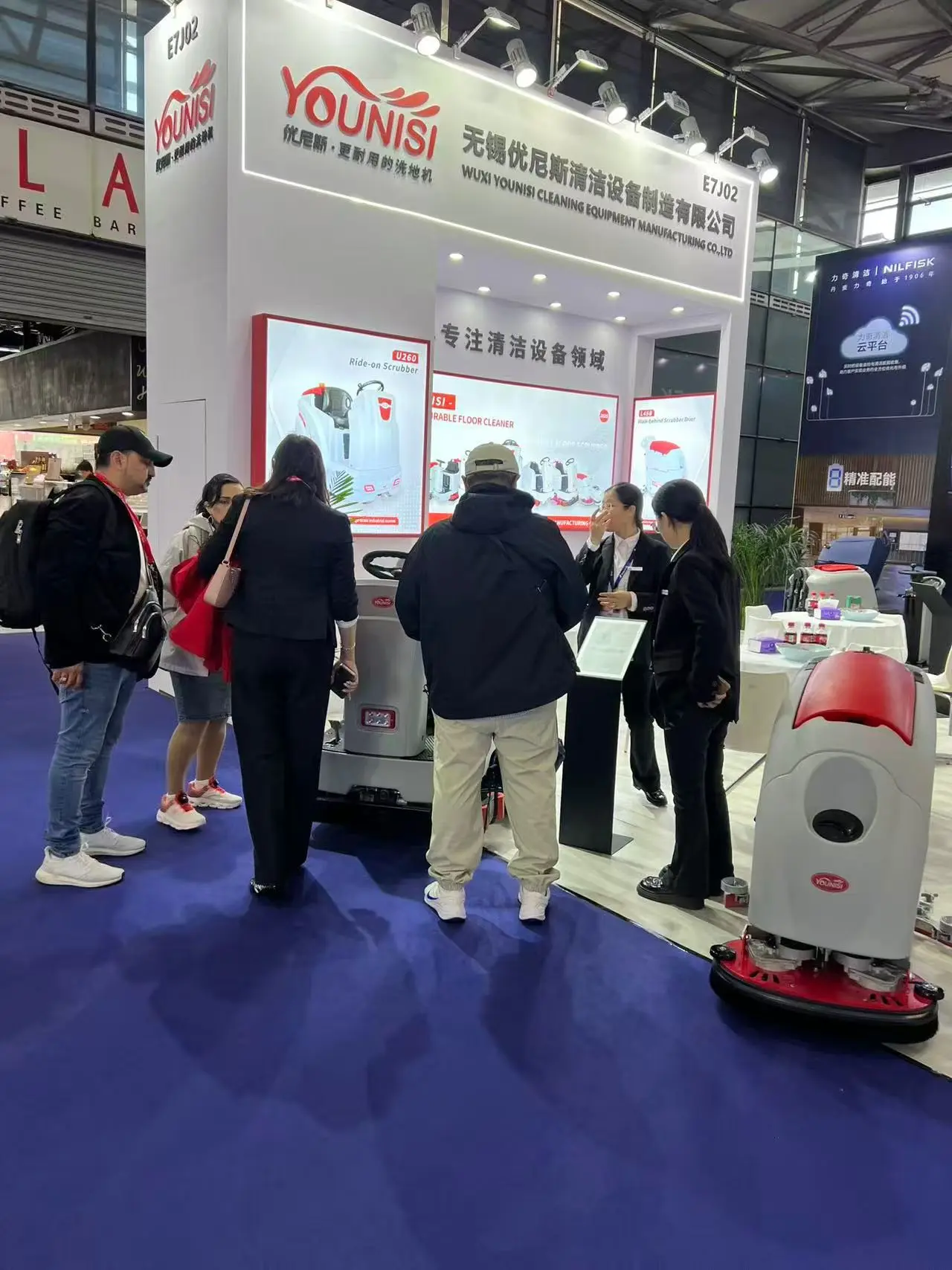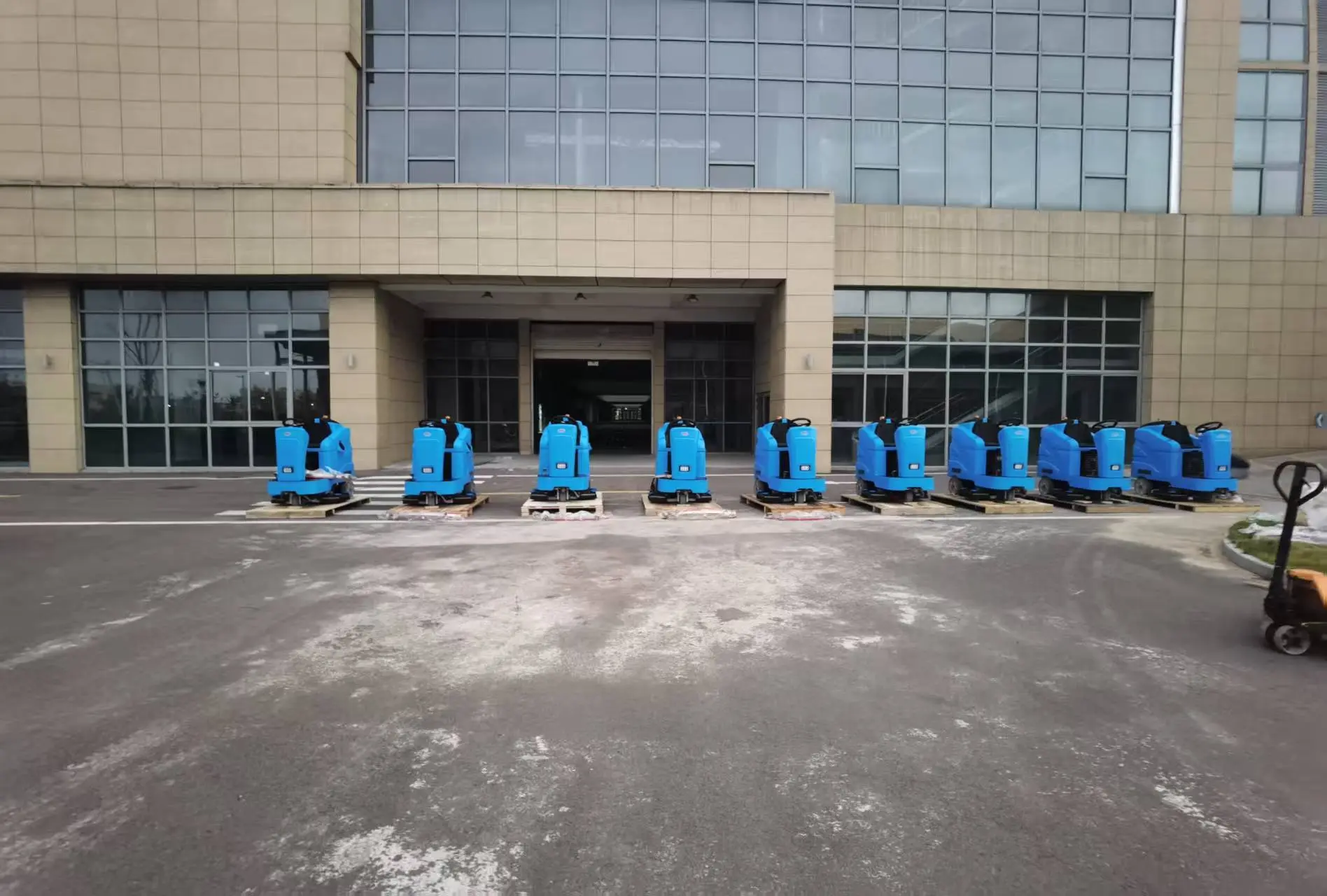Will Floor Scrubbers Be Replaced in the New Era?
Industrial/commercial Floor Scrubbers will not be replaced in the new era.
The reason lies in the fact that the core problem they solve currently has no alternative technical solution that can match their efficiency and cost-effectiveness. Here is a purely functional analysis:
1. Functional Irreplaceability: Unique "All-in-One" Workflow
Industrial floor scrubbers complete a "closed-loop" physical cleaning process:
-
Dispensing water and detergent
-
Mechanical scrubbing (via the brush deck)
-
Immediate recovery of dirty water
This integrated "scrub-suck-dry" process is the most efficient method for dealing with mixed stains (especially oil and greasy dirt) on smooth, hard surfaces (such as epoxy floors, polished concrete, tiles). Any attempt to break down this process into separate steps (e.g., splashing water first and then vacuuming separately) would lead to a sharp drop in efficiency, prolonged surface wetness, and a significant increase in safety hazards.
2. Rigidity of Market Demand: Hard Requirements for Safety, Hygiene, and Standards
In places like factories, warehouses, airports, and shopping malls, floor cleanliness is not just about aesthetics; it is a matter of safety and production requirements.
-
Slip Prevention Safety: Oil and moisture can cause slip-and-fall accidents. The scrubber's ability to immediately recover dirty water is key to ensuring floors quickly become safe for traffic again.
-
Hygiene and Equipment Maintenance: Accumulated oil and dust can corrode floors, damage equipment (e.g., forklift tires), and affect product quality in precision manufacturing workshops. Regular deep cleaning is essential.
-
Compliance: Many industries (such as food and pharmaceuticals) have strict hygiene standards requiring documented and verifiable cleaning processes. Floor scrubbers are a standardized tool for achieving this.
3. Barriers of Economy and Reliability: Cost Advantages of Mature Technology
After decades of development, industrial floor scrubbers are a mature, reliable, and cost-controllable solution.
-
Predictable Maintenance Costs: Their mechanical structure is straightforward, maintenance procedures are standardized, and spare parts are readily available.
-
Predictable Cleaning Efficiency: Based on machine specifications and floor conditions, the time and labor required for cleaning can be accurately calculated.
-
Prohibitive Cost of Alternatives: Achieving the same cleaning effect and coverage efficiency would require either a multi-fold increase in manpower for manual mopping (extremely high cost and inconsistent results) or reliance on immature and exceedingly expensive new technologies, which is economically unviable.
Conclusion
Without considering factors like "intelligentization," the core value of the industrial floor scrubber – its high-efficiency, integrated wet cleaning capability for specific surfaces – faces no real challengers at a fundamental physical level or within current market economics.
As long as modern society continues to have large, smooth, hard-surface spaces, and as long as these surfaces accumulate oil and dust, the fundamental demand for this category of equipment will persist. It will not be replaced, just as brooms and vacuum cleaners have not been completely replaced in their respective application scenarios. Its position remains solid.



